FAQ
TL;DR: A repurposed ATX supply delivers 1 A constant-current to 2-5-cell Li-ion packs, completing a 2000 mAh 4-cell in about 2 h [Elektroda, szon, post #17358035] “Balancing prevents dangerous overcharge” [Elektroda, szon, post #17359285]
Why it matters: safe DIY fast-charge from surplus PC hardware.
Quick Facts
• Input source: recycled ATX/AT PSU, 12 V rail rated 8–15 A typical [ATX Spec, 2012].
• Supported pack size: 2 S – 5 S Li-ion (≤ 21 V) [Elektroda, szon, post #17357629]
• Factory-set charge current: 1 A; adjustable via TL494 divider 0.2–3 A range [Elektroda, szon, post #17358035]
• Passive balancer bleed: approx. 160 mA per cell at 4.2 V (*Zajic balancer datasheet*).
• Maximum safe cell voltage: 4.20 ± 0.05 V [TI, 2016].
1. What voltage and current does the modified charger provide?
The TL494 controls the 12 V rail to reach 4.2 V × cell-count, so 8.4 V–21 V. Current is limited to 1 A by a resistor on the second error amplifier [Elektroda, szon, post #17358035]
2. How is charging current adjusted?
A resistor divider on the unused TL494 error amplifier sets the sense voltage. Changing R1 from 4.7 kΩ to 1.6 kΩ raises current from 1 A to about 3 A [Elektroda, szon, post #17485003]
3. Does the charger feed each cell separately or the whole pack?
It charges the entire pack as one load and uses a passive balancer to keep cell voltages equal [Elektroda, szon, post #17387029]
4. Why is 10 A balancing impractical?
Standard JST-XH balance leads are 22–26 AWG; 10 A would overheat them within seconds, melting insulation [Elektroda, lechoo, post #17359130]
5. Can the balancing current be adjusted?
No. The chosen bleed balancer has fixed resistors; it only shunts cells once they hit 4.2 V [Elektroda, szon, post #17359285]
6. How long to fill a 2 Ah 4-cell pack?
At 1 A constant-current/constant-voltage, typical time is about 2 h, then 20 min taper until 100 mA tail [Elektroda, szon, post #17358035]
7. What protections are included?
A charge-detection module stops current when any monitored cell exceeds 4.20 V, and a fan turns on only above set temperature to prevent overheating [Elektroda, szon, post #17357629]
8. What happens if one of five cells is missing?
The designer omits fifth-cell monitoring intentionally; if charging 5 S you must ensure every cell is present or disconnect the pack [Elektroda, szon, post #17387029]
9. Is a 13-cell version feasible?
Yes, but you need a 55 V capable supply, a higher-voltage balancer, and isolated cell-monitor ICs; the shown ATX hardware cannot exceed 5 S safely [TI, 2016].
10. How efficient is the setup?
ATX supplies run 75–85 % efficient at a 1 A, 20 V load. Heat mainly comes from the balancer and rectifier losses [ATX Spec, 2012].
11. Three-step conversion recipe
- Remove ATX feedback; route TL494 pin1/2 to external voltage divider per cell count.
- Enable second error amplifier; set Rcurrent for desired amperes.
- Add passive balancer board and cell sense harness. Done.
12. What common mistake damages cells?
Connecting the pack before setting current can dump full ATX rail current (≥15 A) into cells, causing thermal runaway within seconds [Elektroda, szon, post #17358035]
13. What wire size suits balance leads at 160 mA?
26 AWG silicone wire drops <50 mV at 0.16 A over 15 cm, keeping balancing precise and cool [IEC 60228].
14. Expert tip for faster charging
“Add a switch to select quick 2 A and slow 0.5 A modes,” advises szon [Elektroda, 17485003]
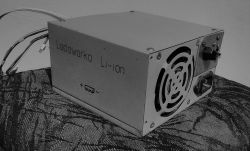

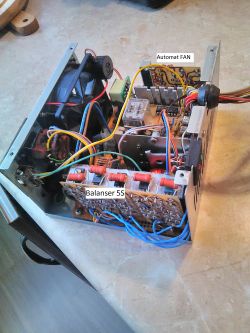

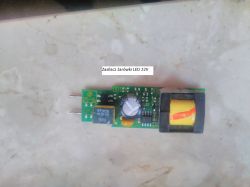
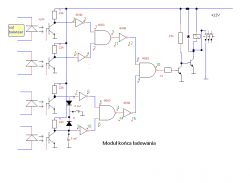

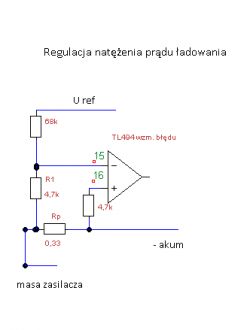



Comments
Nice design. How's the current efficiency? [Read more]
Current efficiency is high, it is known that a computer power supply has, as I wrote, I used a second error amplifier to set the current at 1A. the other amplifier in a typical power supply is blocked.... [Read more]
I'm just missing a specific balancing module that you could adjust from scratch. There are a lot of modeling chargers, however, the balancing power does not exceed 0.2a to 1A on targets. A balancer... [Read more]
I don't know what you mean. As I wrote on the second error amplifier, I made adjustments to the charging current, I set the current to 1A, I could have set it to a different value. I could also install... [Read more]
I can already see those 10A flowing through the thin cables and delicate balancing connectors in the modeling package ... [Read more]
And who said they would be thin. It is important to be able to adjust the balancer current. [Read more]
You have no idea. In my case there is no such thing as balancer current regulation. The balancer is used to charge individual cells to the same value, and prevents overcharging a cell, which is dangerous... [Read more]
The charger loads each target separately or the whole package and only balances [Read more]
The charger loads the package and balances. In addition, I write that the charge detection system monitors 2, 3, or 4 cells. I gave up monitoring 5 cells so as not to complicate the system because if you... [Read more]
It's not what I expect b planning a 13-cell charger [Read more]
Could you do the characteristics of the current and charging over time .. How long does the charging itself, as it selects the current. [Read more]
I wrote about it in the project description. I used a second error amplifier in the TL system to set the charging current ... which is blocked in a typical power supply. at I set the current at 1A using... [Read more]